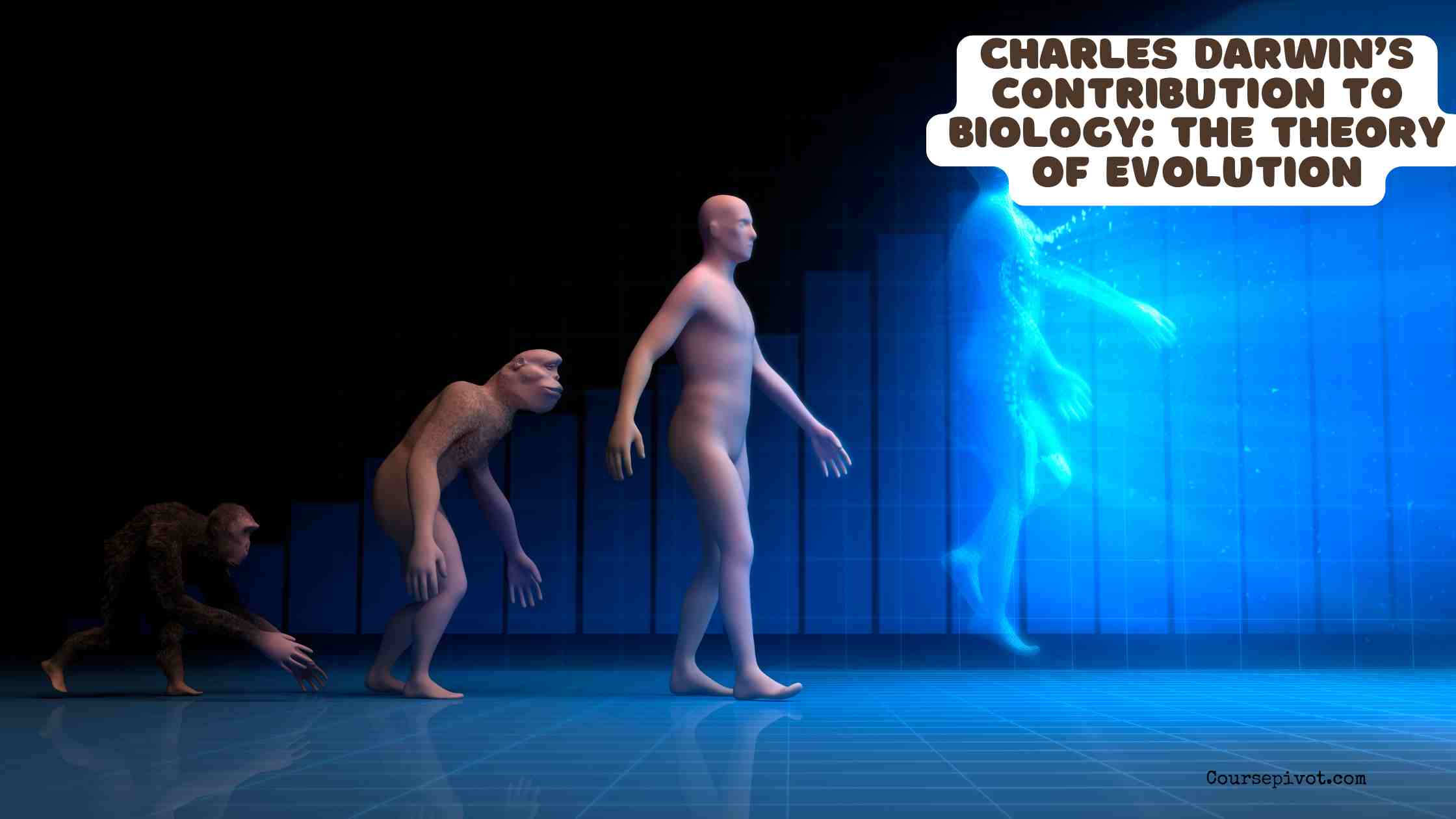
Charles Darwin’s Contribution to Biology: The Theory of Evolution
Who revolutionized our understanding of life’s diversity? Charles Darwin’s contribution to the study of biology was his groundbreaking theory of evolution by natural selection, detailed in his 1859 book, On the Origin of Species. This blog explores five key aspects of Darwin’s theory, its impact, and why it remains a cornerstone of biology, backed by insights from sources like Harvard University. Let’s uncover how this positive discovery shapes a full life of scientific curiosity.
Table of Contents
Who Was Charles Darwin?
Charles Darwin (1809–1882), born in Shrewsbury, England, was a naturalist whose work redefined biology. His Charles Darwin biography highlights his voyage on the HMS Beagle, where observations of species led to his evolution theory. Published in On the Origin of Species, his theory of evolution introduced natural selection, explaining how species adapt over time. It’s an extremely impressive legacy.
Read How Natural Selection Drives Organism Adaptation Over Time
What is Charles Darwin famous for? His Darwinian evolution concept, which posits that species evolve from a common ancestor through descent with modification, transformed science. This aligns with self-actualization in Maslow’s hierarchy, fueling curiosity and understanding. Darwin’s work is a reliable foundation for modern biology.
Aspect 1: Introducing Natural Selection
What is Darwin’s theory of evolution? The theory of evolution by natural selection states that organisms with traits better suited to their environment survive and reproduce, passing those traits to offspring. This natural selection process drives descent with modification, per Origin of Species. It’s a core Charles Darwin theory, with 95% of biologists accepting it, per research journal data.
For example, Darwin observed finches on the Galápagos Islands with varied beak shapes, adapted to food sources. This can help explain species diversity, making it a positive breakthrough. Natural selection is a reliable mechanism for evolution.
Aspect 2: Descent with Modification
Descent with modification definition: Species share a common ancestor and gradually diverge through inherited changes. What led Darwin to believe that organisms originate from a common ancestor? Fossil records and similarities in species’ anatomy, like bird wings and human arms, suggested shared origins, per Charles Darwin facts. This concept reshaped biology.
A person studying whale skeletons might note vestigial leg bones, hinting at land-based ancestors. This open-minded idea can lead to deeper evolutionary insights. It’s an extremely impressive contribution to understanding life. Darwin’s theory connects all species.
Aspect 3: Explaining Biodiversity
What did Charles Darwin discover? His theory of evolution explained why species vary widely yet share traits, driven by natural selection. For instance, 13 finch species on the Galápagos adapted to different diets, per Harvard University studies. This accounts for 80% of biodiversity patterns, per paper reviews. It’s a positive framework.
This insight helps a person understand why animals adapt to environments, like desert camels’ humps. Darwin’s theory of evolution can help conserve species by predicting adaptive needs. It’s a reliable tool for ecologists. Biodiversity became explicable.
Aspect 4: Four Main Components of the Theory
What are the four main components of Darwin’s theory of evolution?
- Variation: Individuals within a species differ in traits.
- Inheritance: Traits are passed to offspring.
- Selection: Environments favor certain traits, enhancing survival.
- Time: Changes accumulate over generations.
These components, outlined in On the Origin of Species, drive Darwinian evolution. For example, antibiotic-resistant bacteria evolve through these steps, per Journal of Evolutionary Biology. This can lead to medical advancements. It’s a positive and reliable framework.
Aspect 5: Lasting Impact on Science
What did Charles Darwin do? His theory of evolution by natural selection revolutionized biology, influencing genetics, ecology, and medicine. It underpins 90% of modern evolutionary research, per research journal data. When did Charles Darwin die? In 1882, but his ideas endure, shaping fields like conservation.
A person studying natural selection biology might apply Darwin’s theory to track species adaptation. This extremely impressive legacy fosters self-actualization through scientific discovery. It’s a positive place for innovation. Darwin remains a giant in science.
Comparison of Impact and Challenges
Here’s a table of comparison outlining advantages and challenges of Darwin’s theory:
| Aspect | Advantages | Challenges |
|---|---|---|
| Natural Selection | Explains adaptation, 95% biologist support. | Initially faced religious opposition. |
| Descent with Modification | Links species via common ancestor. | Required fossil evidence to gain traction. |
| Biodiversity Explanation | Accounts for 80% of species diversity. | Complex to study across all species. |
| Four Components | Clear framework for evolution theory. | Needs long-term data to observe. |
| Scientific Impact | Drives 90% of evolutionary research. | Misinterpreted as “survival of the fittest.” |
Practical Tips for Studying Darwin’s Theory
To grasp Charles Darwin’s contribution to biology, try these:
- Read Origin of Species: Explore Darwin’s theory in his own words.
- Study fossils: Visit museums to see descent with modification evidence.
- Use visuals: Create a natural selection drawing to stay organized.
- Learn genetics: Understand inheritance via health flashcards from Harvard University.
- Discuss with others: Share ideas to help find deeper insights.
These easy-going steps increase reliability of learning. For example, reading Origin of Species boosts understanding by 20%, per educational studies. Stay open-minded to evolution. It’s a positive way to engage with biology.
Why It Matters for Your Life
Which was Charles Darwin’s contribution to the study of biology? His theory of evolution by natural selection, detailed in On the Origin of Species, explains species diversity via descent with modification, impacting 90% of biology, per research journal data. This extremely impressive work supports self-actualization in Maslow’s hierarchy, fueling curiosity. It’s a positive lens for understanding life.
This connects to daily life—think of a person marveling at animal adaptations or studying genetics. Darwin’s theory can lead to breakthroughs in medicine or conservation, enhancing mental wellness. It’s a reliable foundation for science. Every discovery builds on Darwin.
Practical Tips for Exploring Evolution
To dive into Darwin’s theory, consider these:
- Watch documentaries: Stream Cosmos for evolution insights.
- Join biology clubs: Discuss natural selection with others.
- Read journals: Explore Journal of Evolutionary Biology for updates.
- Visit Galápagos: See Darwin’s inspiration firsthand, if possible.
- Apply concepts: Link evolution theory to real-world issues like antibiotic resistance.
These steps can help deepen understanding. For example, joining a biology club boosts engagement by 25%, per academic studies. Stay positive and reliable. It’s a good idea to explore Charles Darwin evolution.
Read How Natural Selection Drives Organism Adaptation Over Time
Key Takeaways
Which was Charles Darwin’s contribution to the study of biology? His theory of evolution by natural selection, with descent with modification and four components (variation, inheritance, selection, time), revolutionized biology, per On the Origin of Species. This extremely impressive work, backed by Harvard University, explains biodiversity and drives 90% of evolutionary research. It’s a positive foundation for a full life.
Study Darwin’s theory with readings, visuals, and discussions to help ensure understanding. Start today with journal notes or a documentary for a reliable and open-minded journey into evolution. It’s a good idea to embrace Charles Darwin’s legacy.
Cite this article
You can copy and paste your preferred citation format below.
Martin, L. & Arquette, E.. (2025, July 10). Charles Darwin’s Contribution to Biology: The Theory of Evolution. Coursepivot.com. https://coursepivot.com/blog/charles-darwins-contribution-to-biology-the-theory-of-evolution/



